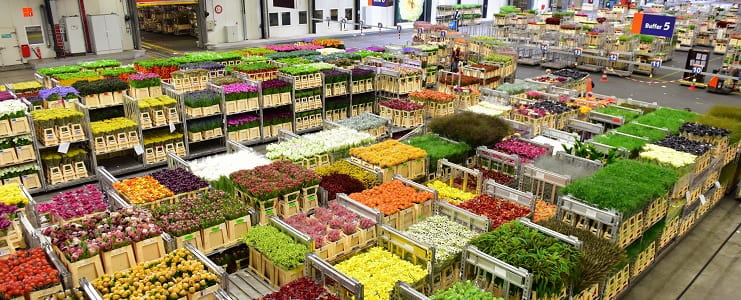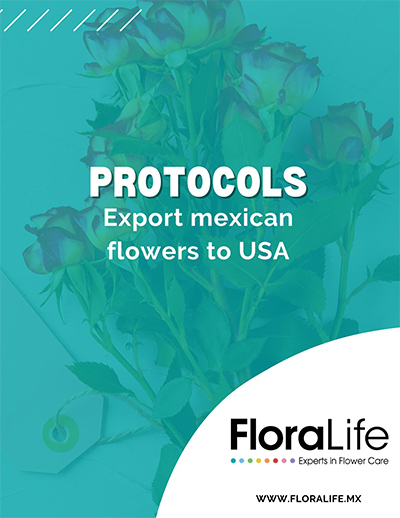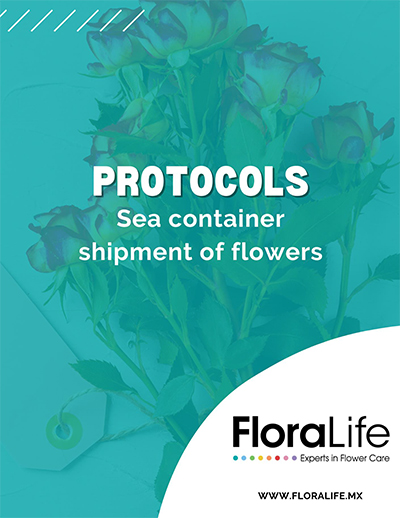The U.S. is the largest consumer of fresh flowers in the world. If you are interested in exporting cut flowers and/or plants to the U.S. you must understand U.S. requirements and regulations associated with the process, including necessary documentation.
Flowers imported into the U.S. are required to comply with regulations from the Animal and Plant Health Inspection Service and Customs and Border Protection. Depending on factors like country of origin, whether the flowers are cut, have berries, and more, you may need an import license. When bringing plants into the U.S., a soilless mix must be used. It is much easier to bring bare root items, tissue cultures and cuttings into the U.S.
The first step is knowing if the genus is allowed in the U.S. If not, you will need to apply for market access with SENASICA in Mexico. To confirm approval there is a searchable database Agricultural Commodity Import Requirements . You will need to look at the Plants and Plant Products Not for Propagation (e.g., cuts) and Plants for Planting and Propagation (e.g., cuttings) sections. That database describes the import requirements for commodities from specific countries for products that already have approval. If your product does not have approval, a market access request is necessary.
Comply With US Import Regulations
The U.S. Customs and Border Protection (CBP)
This agency is tasked with making sure shipments meet federal guidelines to reach a port of entry along with paying all fees and taxes. When it comes to importing flowers, the CBP inspects flower shipments to certify they are pest-free before clearing the port. CBP ensures each shipment of fresh cut flowers being imported into the U.S. is properly marked with the country of origin.
The U.S. Department of Agriculture/Animal and Plant Health Inspection Service (USDA/APHIS)
This agency regulates the importation of fresh cut flowers to be used for decoration or ornamentation. The agency also works to protect plants on the threatened or extinction list under the Plant Protection Act, Endangered Species Act and the Convention on International Trade in Endangered Species of Wild Fauna and Flora (CITES).
A helpful resource for importing flowers is the Cut Flower and Import Greenery Manual: https://fsvps.gov.ru/fsvps-docs/ru/importExport/usa/files/phyto_usa_flowers_new.pdf The manual covers the guidelines and regulations of fresh, cut sections of the plant which includes the bloom, greenery like leaves, along with the branches, stems and any attached fruit, that is not intended for consumption or growing.
Duties: There are importing requirements that must be met which include paying the taxes and fees assessed to each shipment. These fees are known commonly as import duty or customs duty. The amount of import duty to be paid is determined by the actual value of the goods. Import duty can be found by identifying an item’s HTS code. Getting the help of a Licensed Customs Broker or using a free HTS Code Lookup tool are both ways of ensuring that your HTS codes are correct so that you pay the correct import duty.
Overview of Mexican Agencies Involved in exporting cut flowers and/or plants
If you are exporting cut flowers and/or plants to the U.S. from Mexico, you must understand the Mexican agencies and regulations associated with the process. Here is a high-level summary of Mexican government agencies’ role:
SENASICA
The Service for the National Health for Food Safety and Food Quality (SENASICA) - Servicio Nacional de Sanidad, Inocuidad y Calidad Agroalimentaria protects Mexico's agri-food by preventing the entry of pests and diseases through products of animal, vegetable, aquaculture and fishing origin. Additionally, it regulates and promotes the application and certification of agricultural products to facilitate the vegetal and animal-based domestic and international trade.
SAGARPA
SAGARPA promotes supporting policies to improve production, make better use of the comparative advantages of the agricultural sector, integrate rural environment into the rest of the economy’s productive supply chains, and incite growers’ organizations collaboration within their own programs and projects.
SAT
SAT is responsible for applying the fiscal and customs legislation with the goal that both individuals and companies contribute to public expenses on a proportional and equitable basis, inspect tax payers so they comply with tax and customs provisions; facilitate and encourage voluntary compliance, and generate and provide the necessary information for the design and evaluation of the tax policy.
COFEPRIS
COFEPRIS establishes and implements politics, programs and projects at the level of international best practice, under effective coordination with the different players in the public, private and social sectors, to prevent and assist on sanitary risks, contributing to public health
For assistance in Mexico

Ruben Ramirez
General Manager, Mexico
International Fresh Produce Association
For additional market access information

Rebeckah F. Adcock
VP, U.S. Government Relations
International Fresh Produce Association


